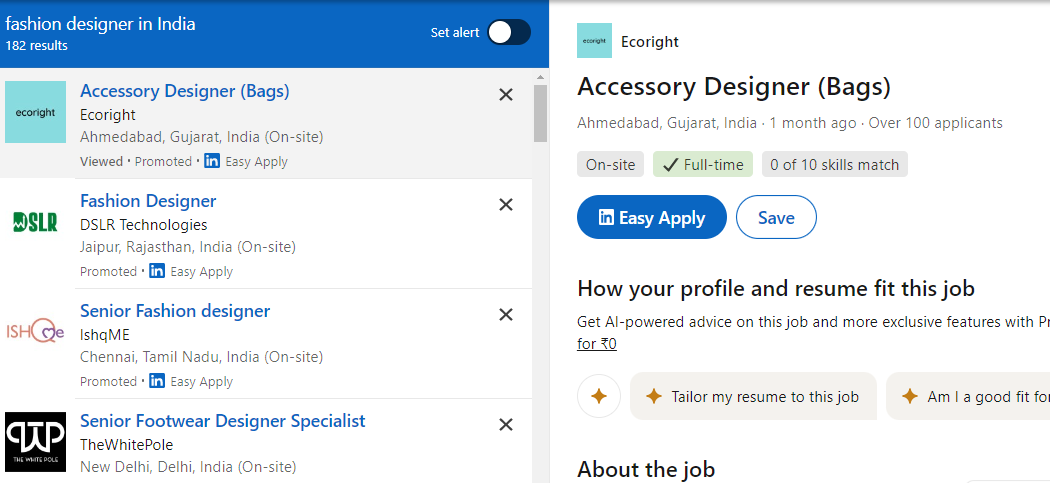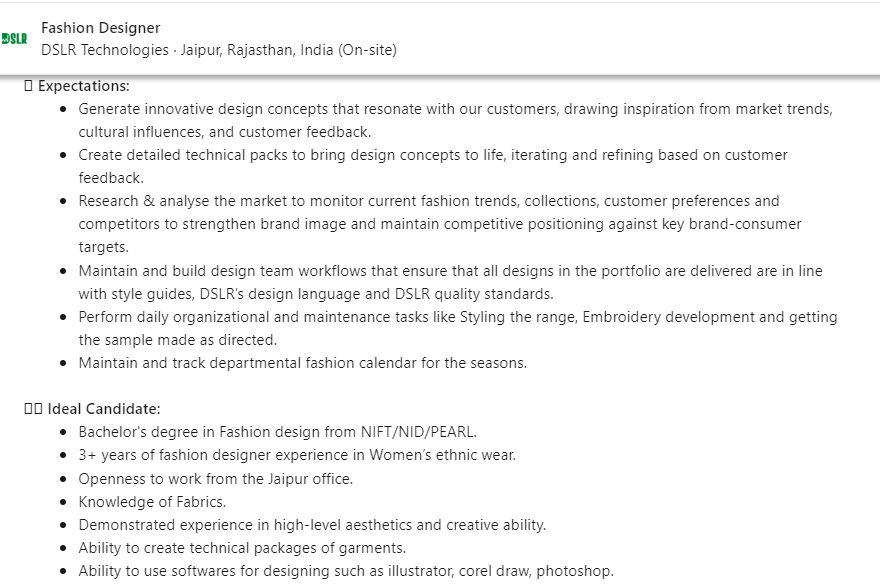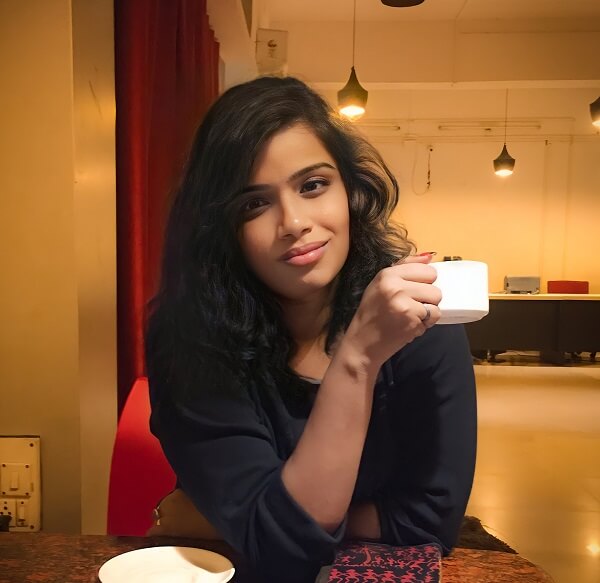Are you passionate about fashion and considering turning that passion into a career?
This comprehensive FAQ guide addresses all your questions about pursuing a career in fashion design.
From understanding the role of a fashion designer to exploring educational paths, required skills, job prospects, and more, we’ve got you covered.
Whether you’re just starting out or looking to advance in the industry, this guide provides the insights you need to navigate the world of fashion design.
What is fashion design?
Fashion design is about transforming your thoughts into designs and creating unique styles for apparel, accessories, and footwear. These designs must follow the trends and prevailing styles while expressing functionality and individuality. It requires a mixture of your artistic and creativity, storytelling, and technical skills.
Fashion design involves numerous stages like conceptualisation, sketching, choosing the right fabric, pattern making, and garment construction.
It includes multiple elements, such as choosing material and colour and determining the right textures and embellishments to create innovative designs that fulfil the needs of specific target audiences or markets.
This study needs a better understanding of the fashion history and the changing trends in the market to bring ideas to life.
Is fashion design a good career?
Yes, fashion design is a good career. The employment of fashion designers is expected to grow by 5% from 3024 to 2033, as per a U.S. Bureau of Labour Statistics report.
Nearly 2,100 openings are available each year for fashion designers on average. Most of them are because of the labour crisis in the market, the exit of the labour force, andthe switching companies.
You can find hundreds of opportunities for fashion designers on job boards. We have searched for “fashion design jobs in India” on LinkedIn and found 180+ openings.

What are the different types of fashion design qualifications?
There are multiple types of fashion design qualification courses available for students.
Bachelor of Design
It is an undergraduate 4-year course that offers multiple specialisation options like product design, textile design, leather design, accessories design, industrial design, knitwear design, etc.
B.Sc in Fashion Design
It is also an undergraduate course suitable for students from a science background. It has a similar type of syllabus as B.Des but focuses on the technological side, like 3d design and modelling, Digital pattern making with CAD, digital draping, etc.
Bachelor of Fashion Technology
This 4-year technical course focuses more on fashion technology and the textile industry than on designing. It includes learning apparel manufacturing, textile technology, fashion marketing, and garment construction.
Diploma in fashion design
These are 1-2 yours short-term courses that focus intensely on developing practical skills and help you enter the industry quickly
Certified fashion design programs
These are short-term fashion design learning solutions for students seeking immediate skill enhancement or specialisation. They usually last a few months to a year, and you can complete them online or offline.
Master’s degree program
You can join the master’s degree program after graduation. You can pursue an M.Des, M.Sc in Fashion Design, M.FTech, or M.F.M (Master of Fashion Management)
Specialised short fashion courses
These are suitable for fashion designers who are interested in very specific niches like digital fashion illustration, sustainable fashion, or fashion event management
What do fashion designers do?
Fashion designers are professionals who transform ideas and concepts into trendy garments, accessories, and footwear. Here is what they do:
- Trend research and analysis: Fashion designers research fashion trends and analyse what consumers prefer more
- Conceptualisation: They collaborate with the design theme to develop concepts and ideas for new products based on the market research data and decide on the theme, colours, and fabrics to be used
- Sketching and illustration: Designers then create initial sketches or design illustrations digitally and develop mood boards showcasing the themes, textures and concepts they will use for final work.
- Choosing material: Designers need to decide on what fabric to choose depending on seasons, functionality, budget, and impact on the environment, colours, patterns, and textures for each design.
- Production process: Designers will collaborate with other professionals to first create a prototype and then take part in the entire production process, including fittings, determining prices, and managing fashion marketing
Besides these, fashion designers also perform the following tasks:
- Arranging fashion shows and exhibitions to showcase designs and market designs through photoshoots, advertising and social media
- Maintain relationships with vendors, suppliers, team members, and models
- They need to communicate technical design information for creating customer samples and create digital illustrations using CAD
- Designers also need to work on creating cost sheets and product lists
Here’s an example of a fashion designer job post that showcases what designers will do

How much do fashion designers earn?
Fashion designers earn between ₹0.6L – ₹7.5L per annum in India, with an average annual salary of ₹4.3 Lakhs.

You will earn more if you are specialising in demanding fashion design niches like leather design, textile design, luxury fashion design, and industry design.
How to learn fashion design?
Here’s a simple step-by-step guide to help you get started and build a strong foundation in the field:
1. Understand the Fashion Industry
Start by learning about fashion history, trends, and industry challenges. Watch documentaries, read fashion blogs, and follow top designers. This self-learning will help you during interviews and applications.
2. Learn the fashion design Basics at Home
Master the essentials like stitching, sketching, fabric types, color theory, and pattern-making. You can use YouTube tutorials, online courses, or join community classes.
Here are some beginner-friendly resources to help you learn fashion design, including online courses, books, YouTube channels, and design tools:
🎓 Online Courses
- Coursera – Fashion Design Courses
Offers beginner to advanced courses from top institutions like Parsons and the University of London.
🔗 Visit Coursera
- FutureLearn – Fashion Design Courses
Explore courses on fashion design essentials, sustainability, and digital fashion design.
🔗 Visit FutureLearn
📚Check out fashion design books you must read.
🎥 YouTube Channels
- Zoe Hong: Offers tutorials on fashion drawing, design processes, and industry advice.
🔗 Visit Zoe Hong’s Channel - Justine Leconte officiel: Covers fashion design principles, sustainable fashion, and style tips.
🔗 Visit Justine Leconte’s Channel - Fashion School Daily: Insights and tutorials from the Academy of Art University School of Fashion.
🔗 Visit Fashion School DailyYouTube
Here’s a fashion design career checklist: key steps to build a career in fashion design:
Fashion Design Career Checklist
- Understand the fashion industry and its history
- Learn essential skills: sketching, sewing, and pattern making
- Build a strong and diverse design portfolio
- Enroll in a reputable fashion design course or program
- Gain hands-on experience through internships or projects
- Stay updated with current fashion trends and technologies
- Network with industry professionals and peers
- Explore various career paths: designer, stylist, merchandiser, etc.
3. Start Creating Your Own Designs
Put your skills to use. Sketch your ideas, sew simple outfits, and experiment with different styles. This helps you find your unique fashion voice.
4. Build a Strong Portfolio
Collect your best sketches, designs, and photos of outfits you’ve made. Most fashion schools require this during the application process.
5. Choose the Right Fashion Design Course
Look for reputed institutions that offer specializations, internships, and real-world exposure. For example, KFDI has trained over 820 students in the last 6+ years and is known for its quality education in India.
👉 Learn more about our Kolkata fashion design training course that offers the best curriculum with placement assistance from top colleges.
6. Get Real-World Experience
Apply for internships while studying. Institutes like KFDI partner with 10+ fashion houses to provide students with hands-on training and industry exposure.
Can a fashion designer be a model?
Yes, a fashion designer can be a model. You can find multiple fashion designers who model their designs on social media platforms, runway shows and promotional shoots, like Masaba Gupta, Manish Arora, Nikhil Thampi, Tom Ford, and Victoria Beckham.
There are several reasons behind it, such as
- Brand identity: Fashion designers use their own design to create a personal connection between themselves and the brand so that customers can relate the designer’s personality to their fashion line.
Also, the designer can better illustrate the exact vision behind their apparel than hired models.
- Control over the presentation: Designers who do modelling for their own brand have complete control over its presentation, deciding on how to pose, add accessories and illustrate the real story through their look.
- Cost-effective option: Hiring a paid model can be costly, especially for luxury brands, as the face matters to the customers. If you are starting out new, you can be your brand model to save money. However, top brands often use their fashion designers as models because people know them, and their reputation brings in more customers.
Why are designer clothes so expensive?
Designer clothes are so expensive because of multiple reasons, such as
- Quality: Designer clothes offer high-quality fabrics, trims, stitches, interlinings, and finishing techniques. Besides these, they use high-quality paper for hang tags, labels, packaging, etc. The better the quality, the more will be the price.
- Uniqueness: They keep designs unique, which requires the time and effort of the designer to think about how to separate one from another, including colours, fabrics, prints, labels, packaging, etc. It requires talented designers and a product development team, which increases the overall cost of the products.
- Exclusivity: Designer clothes are made for mass fashion. They are produced in smaller numbers, and so the cost per unit from the manufacturing firm is higher than other garments. Limited commodities are worth more in the market.
- Business model: These clothes are often sold through established retailers where the brand needs to use two markups in their pricing, i.e., cost-to-wholesale and wholesale-to-retail. This increases the price of the product line when it reaches customers, as everyone needs to keep their profit margin.
- Designer’s Experience: A designer is paid as per their experience in the field. Luxury brands often hire designers with 10+ years of experience, and they will certainly charge more. Companies won’t pay them from their pocket, but customers will indirectly do so by paying high prices for their designs.
What is fashion design and technology?
Fashion design and technology is the intersection of fashion and textiles with technology, like the use of AI in the design process.
AL algorithms can identify consumer preferences and analyse market trends to help designers create fashion lines that will resonate with the target audience’s needs. These professionals will use software like Adobe Illustrator for virtual modelling, CAD for 3D design and digital draping, and the use of 3D printing, etc.
This fashion design major is suitable for students from a science background in the 12th grade. It mixes art and design with advanced tools and technology to efficiently create, produce, and manage fashion products.
Can fashion designers work from home?
Yes, fashion designers can work from home using digital tools. Technology will assist you in designing, communicating with clients and manufacturers, team collaboration, marketing, and handling business operations.
You need a separate workspace to get unique ideas and transform them into designs. You require proper materials, equipment, and mood boards.
Who do fashion designers work with?
Fashion designers work with large apparel brands and fashion houses or in the film and television industry. You can work for wholesalers and manufacturers who can sell the product to retailers or other distributors, individual stores or online shops.
Though fashion designers are experts in every part of garment production, they have few experts on the team, like an assistant, a
pattern-maker, sewing team, technical designer, textile designer, salesperson, marketer, production team, and brand models.
Will AI replace fashion designers?
No, AI won’t replace fashion designers, especially because robots can’t be creative and find unique ideas for designs. These are trained by humans based on the data already available, so they will either copy someone’s design or create something similar. In the fashion world, to make your name, your designs must be unique. This requires experienced professionals.
However, AI will assist fashion designers in predicting trends and creating hyper-personalised shopping experiences for their target customers.
Further reading:


